I cannot begin to describe how thrilled I am with the new box set from Severin called The House of Psychotic Women, in conjunction with a sensational cinema book by Kier-La Janisee (more on that later). It includes oddball International rarities like Footprints (1976); The Other Side of the Underneath (1972); I Like Bats (1986), but, for me, the high point is a stunning, 4K restored copy of The Driver’s Seat (here under the European title: Identikit), with one of the most gloriously bonkers performance by Elizabeth Taylor. And for those of us who get wild-eyed when people mention other over-the-top Taylor features like Boom!, X, Y & Zee, Hammersmith is Out and Secret Ceremony, this is a ripe cause for celebration.
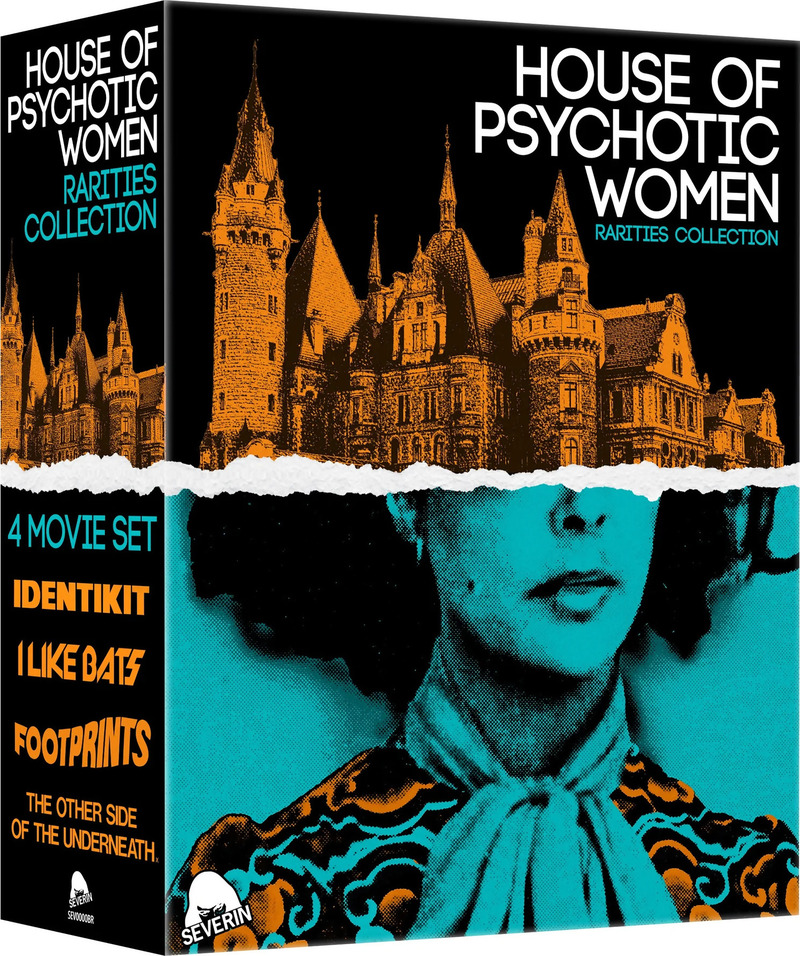
Now, when I was manager of a revival movie theater on Cape Cod in 1974, I got a call from our film booker George Mansour who told me I just had to see this new movie starring Elizabeth Taylor based on a Muriel Spark novella. He had that tone in his voice intimating the film was so terrible it was wonderful and I switched my night-off and took a bus into Boston the day the film opened. I was standing in front of the cinema for the first showing at 11AM. The poster was there and the title was up on the marquee, but curiously the theater didn’t open. I stood there for an hour, went back an hour later and the place was still shuttered and dark. I even called the theater and got the recorded message with The Driver’s Seat’s screening times. But after a few hours back and forth I finally gave up and took a bus back to Provincetown. Oddly, the next day another movie was playing at the theater and, as much as I tried, I could never get anyone on the phone to explain what happened to The Driver’s Seat.
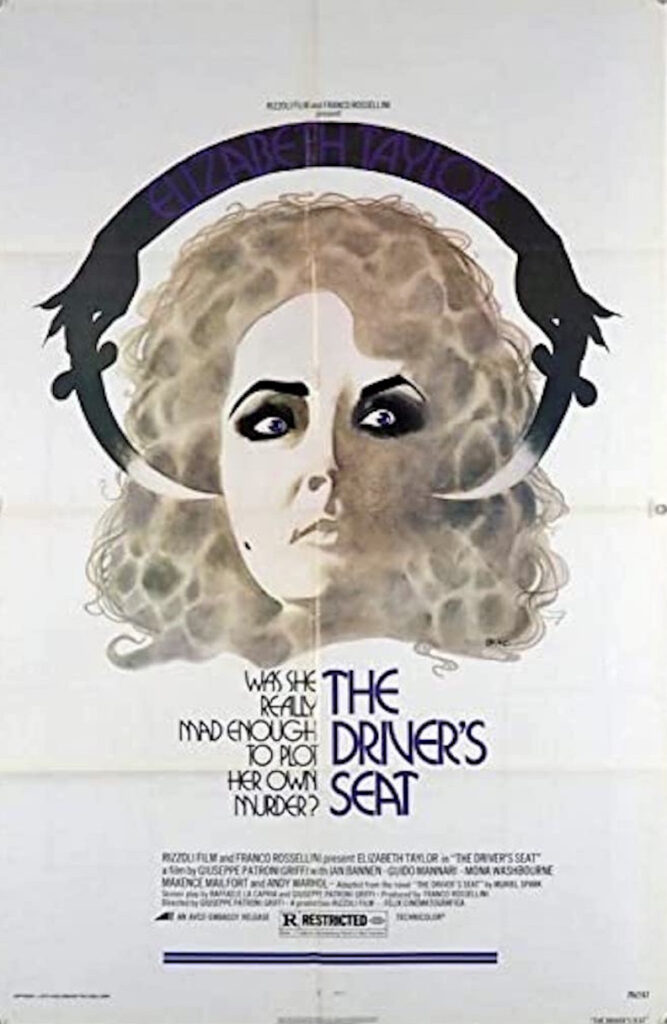
It became that elusive film title that got away from me, only fueling my intense curiosity. I often heard that phrase, “We closed in Boston.” What the hell kind of a movie was too weird to even open in Boston? It wasn’t until I moved to New York while I was perusing a West Village video store I discovered to my shock a VHS copy of The Driver’s Seat. I was so insane I joined The World of Video that very day and I vividly remember walking home with the movie jostling around in my bag, practically tumescent with a sense of erotic anticipation. I was finally going to get to see the damned thing.
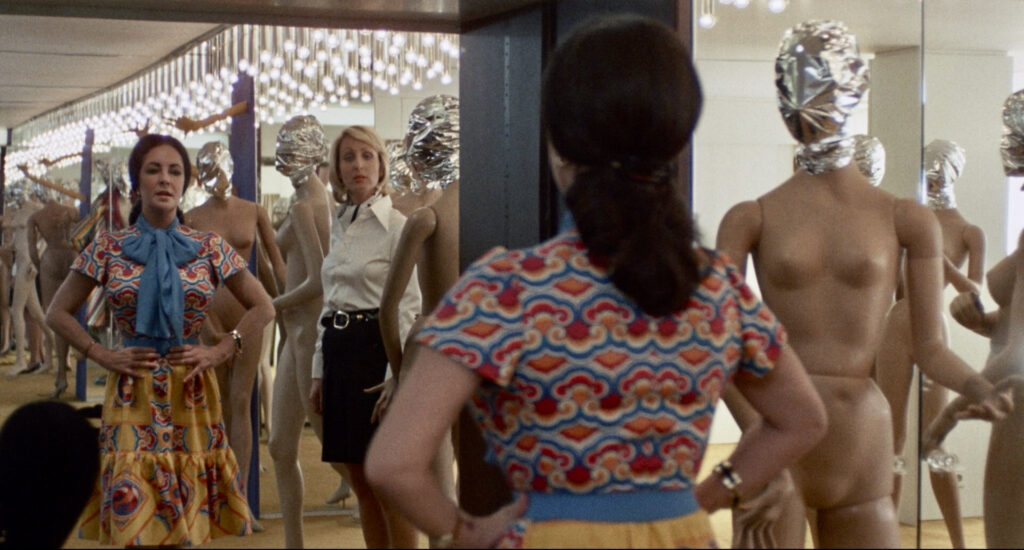
The film begins with Lise (Elizabeth Taylor) picking up a dress she ordered for a vacation to Rome. She gushes about the “pure blend of natural colors,” but when the saleswoman tells her it’s also “stain resistant” she has a fit in the store and is only calmed down when they reassure her it is also available without that option. Her outfit is so loud that as she’s leaving by taxi for the airport the cleaning lady bursts out laughing at her and says, “Where you go dressed like that, to join the circus?”
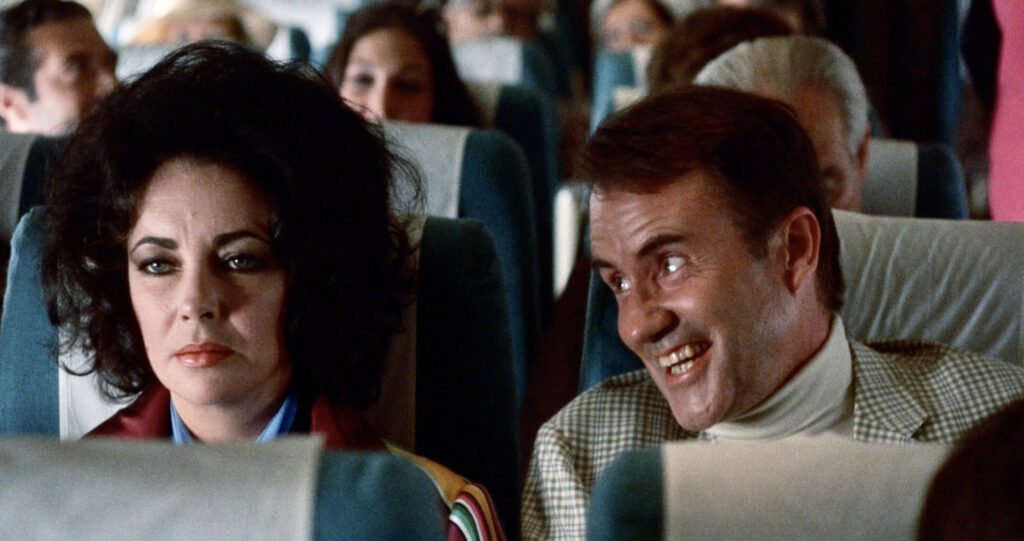
Everything about Lise is slightly off- she’s confrontational, difficult, defiantly disagreeable. A man sitting beside her on the plane to Rome panics when she keeps staring at him and jumps up and rushes to another seat just to get away from her. A garrulous blowhard on the flight (Ian Bannen) rants about the joy of macrobiotics and hints, “I have to have an orgasm a day on my macrobiotic diet.” But Lise replies, “I’m not interested in sex- I’m interested in other things.” Coming from her hotel she shares a taxi with a lovely, older tourist (Mona Washburne) and then Lise deliberately stuffs her own passport down behind the back seat of the cab, “where it will be safe.” The two women witness the car bombing of a foreign dignitary and Lise is driven back to her hotel by a horny mechanic who unzips his jumpsuit and attempts to force Lise’s head down on his crotch. She fights back and ends up stealing her car, pulling alongside a cop and asks directions to a hotel and then adds, “Do you carry a revolver? Because if you did you could shoot me.”

The film often flashes forward to a police investigation, interviewing many of the people who interacted with Lise. A woman being interviewed by the police describes the creepy energy coming from her. That it was, “a potential for catastrophe.” Spark’s novel also experimented with time and structure. Lise seems on a mission on her holiday and making herself noticed whenever she can. In fact, Muriel Spark adored the Italian title of her novel Identikit because she felt it matched the character’s search for identity. The book was actually based on a true crime where a woman engineered her own murder.
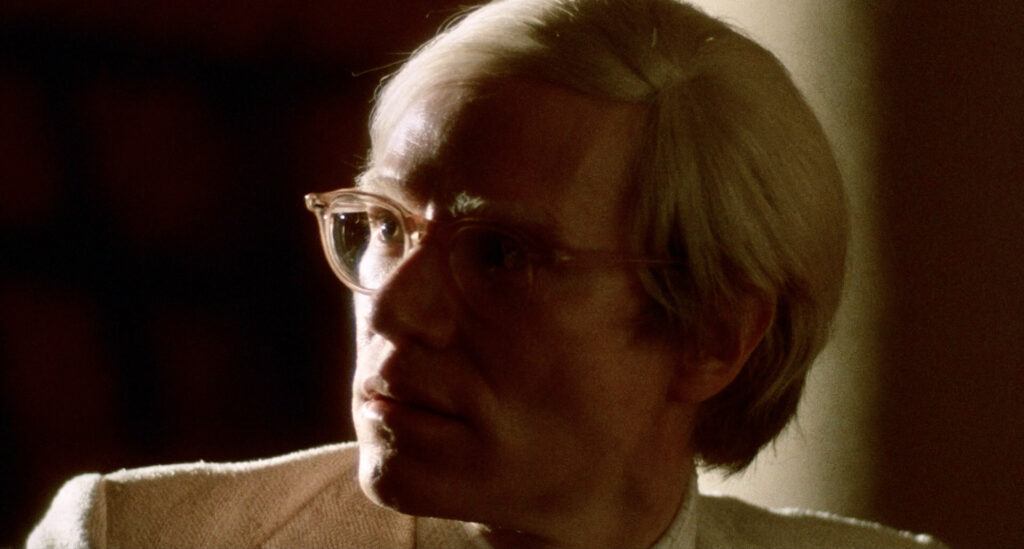
Andy Warhol shows up in the airport as a Lord who approaches Lise because she dropped her paperback book (The Walter Syndrome by Richard Neeley). The cover of the book is a dark hint of what’s to come. Warhol was probably in Rome for the shooting of Blood for Dracula or Flesh for Frankenstein and agreed to do a cameo and it just adds another bit of weirdness to the film.
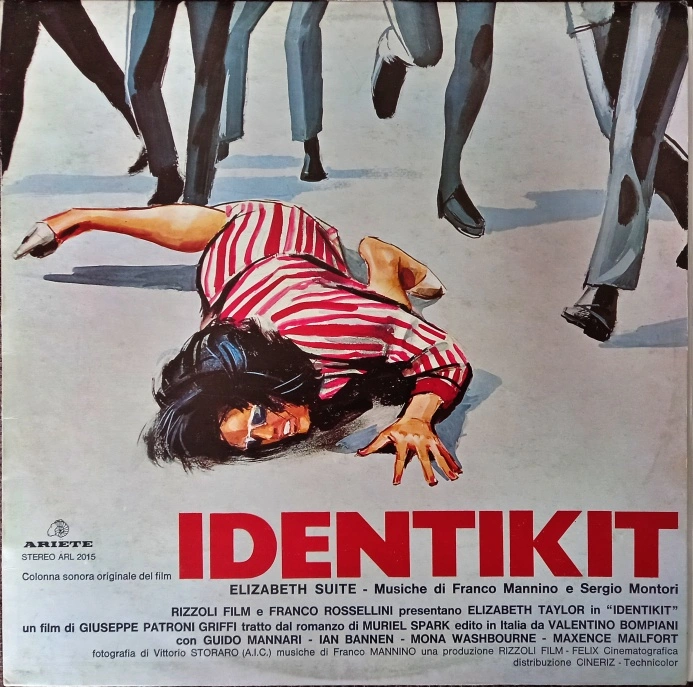
Elizabeth Taylor arrived on set the day after her divorce from Richard Burton and throws herself into the role with demented gusto. She fills the character with just the right kind of off-putting strangeness. The Severin blu-ray restoration is a revelation- you can now clearly hear the lovely, elegant piano score by Franco Mannino and see the gorgeous cinematography by the great Vittorio Storaro (the nighttime scenes in the park are otherworldly). It includes an excellent extra with literary historian Chandra Mayor about author Muriel Spark (The Prime of Miss Jean Brody), who considered The Driver’s Seat one of her favorites. This Italian-made film was directed by Giuseppe Patroni Griffi (‘Tis Pity She’s a Whore) and is one of the rare times when a title I have always wanted to see didn’t disappoint me. I consider the movie truly bizarre, fucked-up and fabulous.

It always infuriates me to read genre books where the author badmouths and dismisses most of the titles they include. It’s as if they have to be more superior than their subject. What’s so refreshing about Kier-La Janisee’s book House of Psychotic Women is that she is able to give a rich, detailed, historical perspective of the movies she includes, but by mixing in far more personal and revealing aspects of her own life and how they reflect on the films. While the book focuses on movies about neurotic, paranoid, sometimes deadly females, it’s a daring take on what makes these films so compelling and endlessly fascinating.
This Severin Blu-ray box set includes three other hand-picked films with illuminating introductions by Kier-La Janisse.
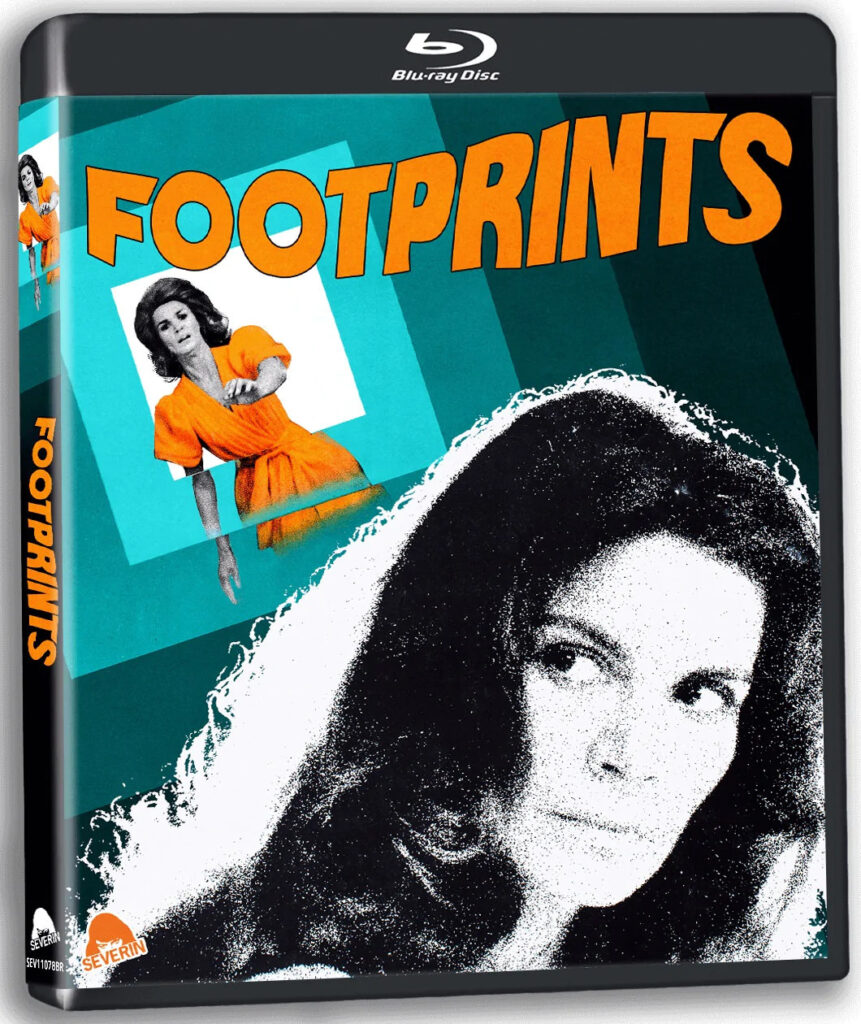
Footprints (1975) is another strange “giallo” by director Luigi Bazzoni (The Fifth Cord) and stars the always amazing Florinda Bolkan (A Lizard in a Woman’s Skin) as Alice, a foreign translator, living in Rome, who awakes one morning to find that she is missing three days of her life. The only clues are a ripped postcard of a hotel in Garma and a mysterious blood-stained yellow dress. Alice travels to the off-season, seaside town of Garma and meets all these strangers who seem to know her, even though she has no memory of ever being there. Included is a precocious little girl who knows more than she lets on (played by Nicoletta Elmi– a familiar staple in horror films at the time like Deep Red, Bay of Blood, Flesh for Frankenstein and others). Alice also suffers nightmares about a film she saw as a child about an astronaut left alone on the moon as a scientific experiment and his fear and sense of isolation is something she can relate to. (Klaus Kinski pops up in those sequences). This haunting thriller is also enhanced by the gorgeous cinematography of Vittorio Storaro (The Conformist, Apocalypse Now). Two versions of the film are included, along with a lengthy interview with Storaro and other goodies.
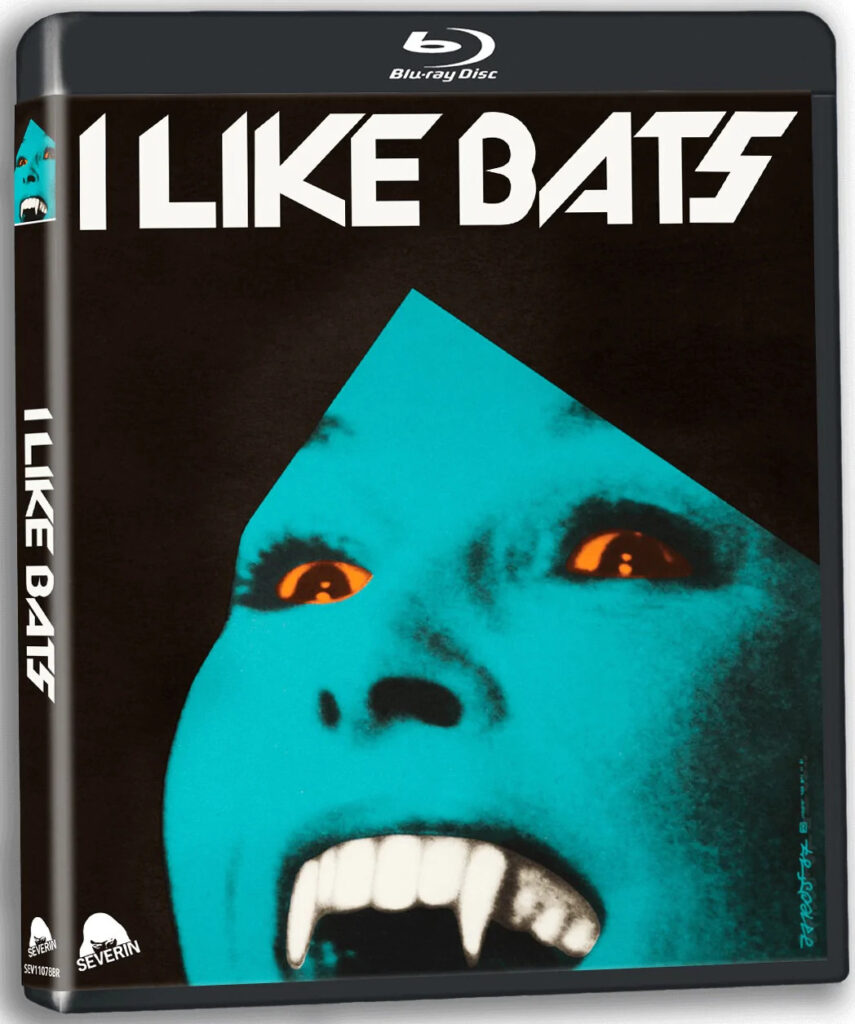
I Like Bats (1986) is a whacked-out Polish horror film directed by Grzegorz Warchol about cool, blonde beauty Izabela (Katarzyna Walter), who works in her mother’s antique store and at night goes home to play with live bats. She is also a vampire and fatally bites several loathsome men about town. Desperate for a cure of her malady, she heads to a mansion-like sanitarium and checks herself in, but the handsome head of the institute is convinced she is just delusional and begins to fall for her. All the while she is draining staff and patients of their blood. There is a light touch about the film. It sparkles with dark humor and oddness. Audio commentary is by Kamila Wielebska, actor and co-editor of the book A Story of Sin: Surrealism in Polish Cinema.
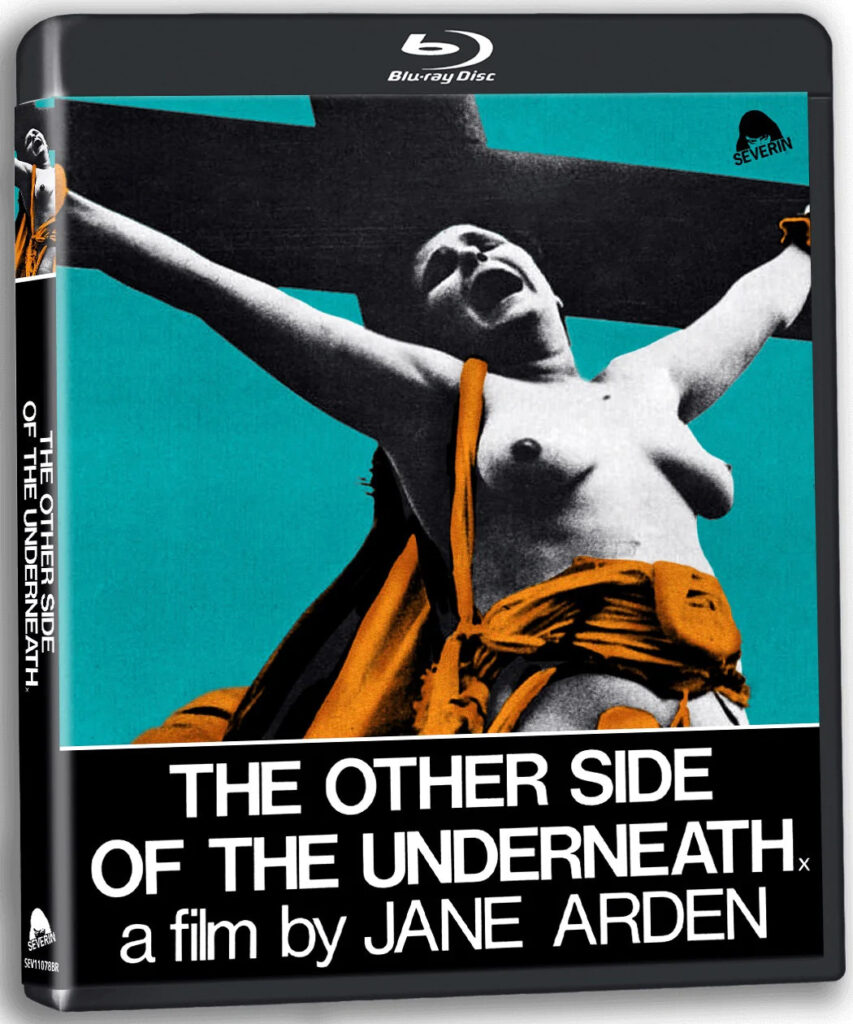
The Other Side of the Underneath (1972) This angry, surreal provocation by Jane Arden is based on her stage play A New Communion for Freaks, Prophets and Witches. Arden transported much of her troupe of actors (who she christened The Holocaust Theater Company) to Wales and then encouraged them to drop copious amounts of LSD while she drunkenly filmed them act out a shambling story of a schizophrenic, suicidal, woman’s struggle to regain her sanity through harrowing group therapy sessions. A wild mix of radical theater and self-indulgence, but also bursts of nightmare logic and chaotic brilliance. A cinematic primal scream. Also, the only film directed in England by a woman in the 1970s. This was difficult to see for years due to the film’s troubled distribution history and director Jane Arden’s own suicide. There were many casualties of the making of the film, including an actress’s husband who set himself on fire to protest the whole mad experience. The disc included interviews with several women who worked alongside Arden (Sheila Allen, Natasha Morgan, and, in a lengthy on-stage interview, Penny Slinger).
Miss this remarkable box set at your own peril.

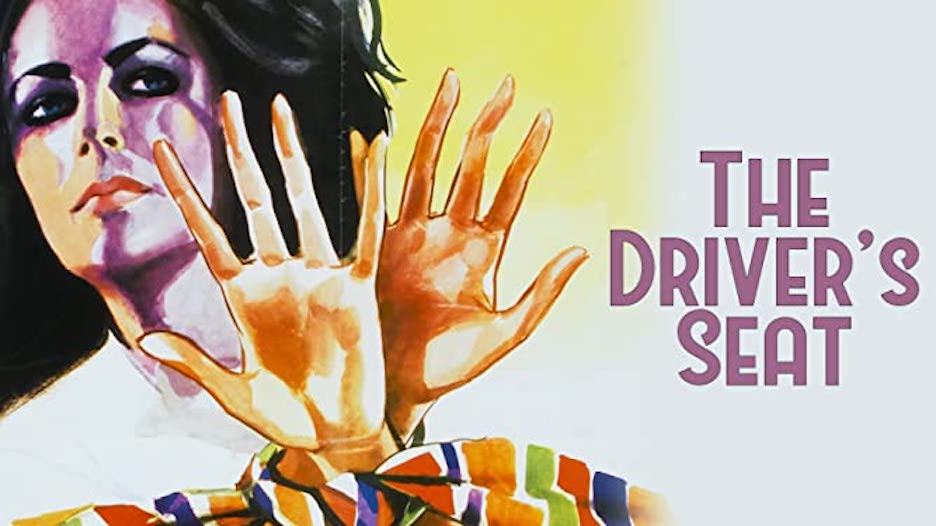
absolutely loved Identikit and Footsteps (saw them streaming on Shudder). I thought in particular Liz was amazing the former!